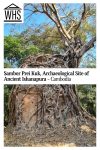Temple Zone of Sambor Prei Kuk, Archaeological Site of Ancient Ishanapura
By Rachel Heller
What is the Temple Zone of Sambor Prei Kuk, Archaeological Site of Ancient Ishanapura?
Sambor Prei Kuk is an assemblage of Hindu temples in what was once the capital of the Chenla Empire, then called Ishanapura. While there was once a whole city here, most structures were of wood, so only the temples, made of fired clay bricks, have survived. They date to the 6th and 7th century. There are 186 temples, but most are complete ruins or haven’t even been excavated yet. A few, however, are intact and can be visited. Eleven of them are unusual in that they are octagonal, which apparently accords wth ancient Indian architectural precepts, though the style was never used in India.
Disclosure: This article contains affiliate links. Making a purchase through an affiliate link will mean a small commission for this website. This will not affect your price.
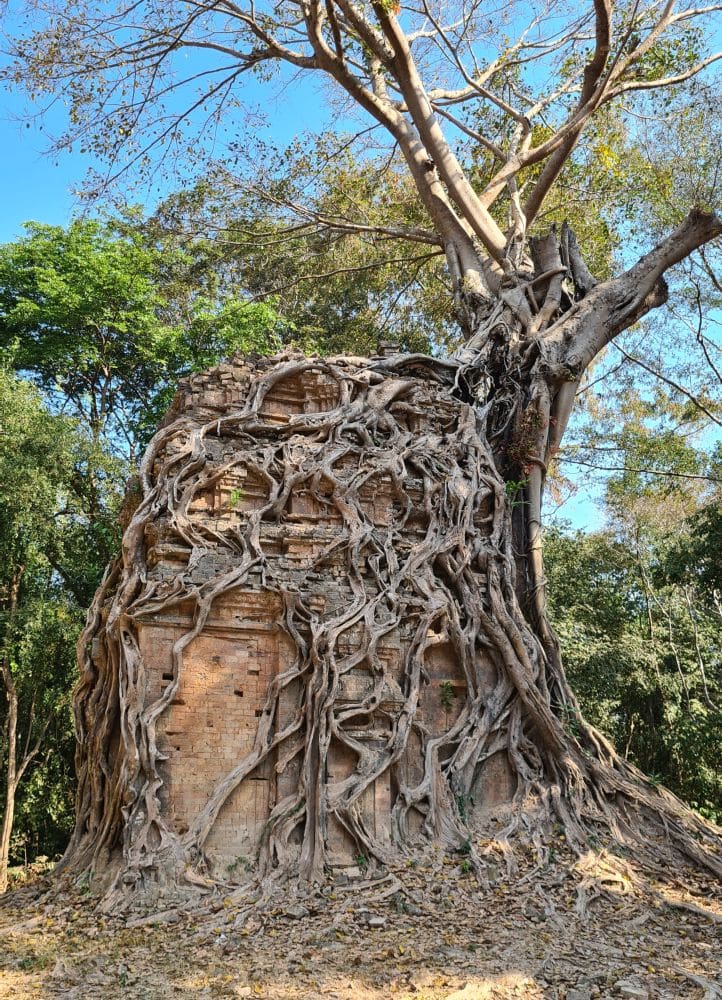
Why is this temple zone a UNESCO World Heritage site?
The Sambor Prei Kuk style, according to UNESCO, “presents a vivid convergence of spiritual and technical influences between Hindu cults predominantly from India and Persia and elements of animism and Buddhism, which became a model that spread to other parts of the region and eventually led to the crystallization of the unique Khmer style of the Angkorian period.” It also testifies to the traditions of the Chenla Empire and its influences on later Khmer civilization.
In addition, the Khmer inscriptions in some of the temples “reflect the concept of the God-King, which according to legends originated in Vat Phou, was further developed during the Angkor period, and then much later influenced Thailand’s four pillared administrative system in Ayutthaya.” This idea was influential into the 20th century.
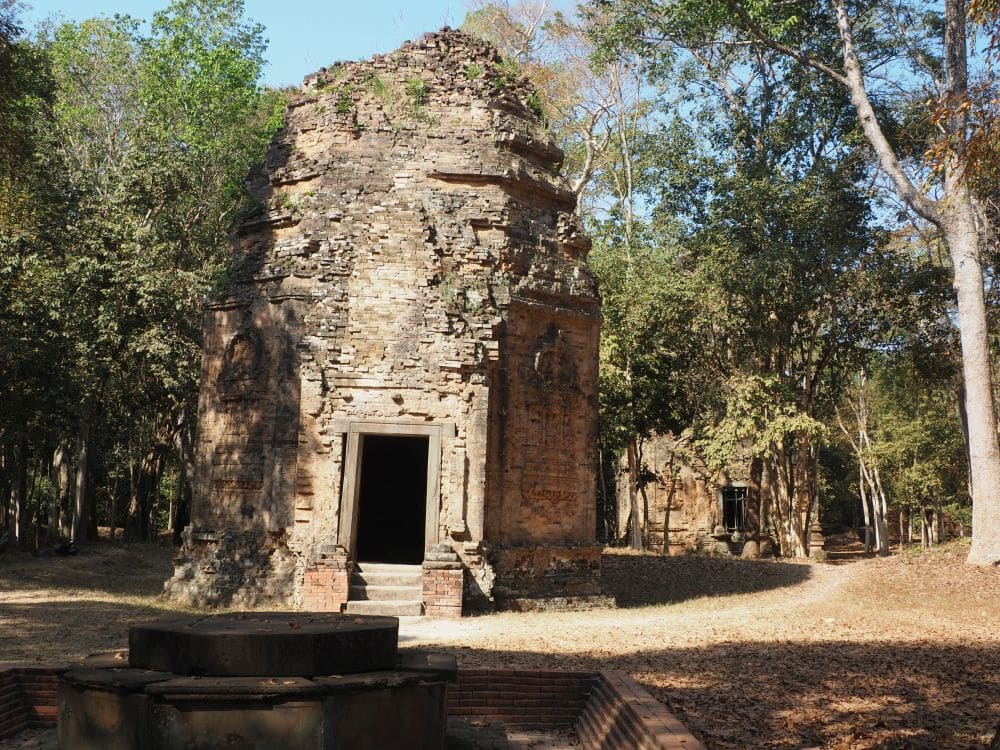
What can you expect on a visit to Sambor Prei Kuk?
The temples are scattered around a wooded area, grouped in three clusters: north, south and central. Generally there was a large temple in the center on a platform and subsidiary temples around it. They are small: just one space inside that would have once held a statue of Shiva. Most of the original statuary from these temples has been stolen and is now in private hands or in foreign museums.
The curved shape of the temples was created with cantilevered brick, which you can see well on the inside of the temples. Each succeeding row of bricks sticks out slightly from the layer below it. At the top, now an open hole, there would have been a small wooden cap.
This UNESCO site is known particularly for the “flying palaces” depicted on the temples. This is also related to the octagonal structure of some of them, which represents the octagonal flying palace of Indra. In Hindu mythology, the Heaven of Indra, the King of Heaven, floats above Mount Meru, where the gods live. On the exterior of some of these temples, images of flying palaces are still visible.
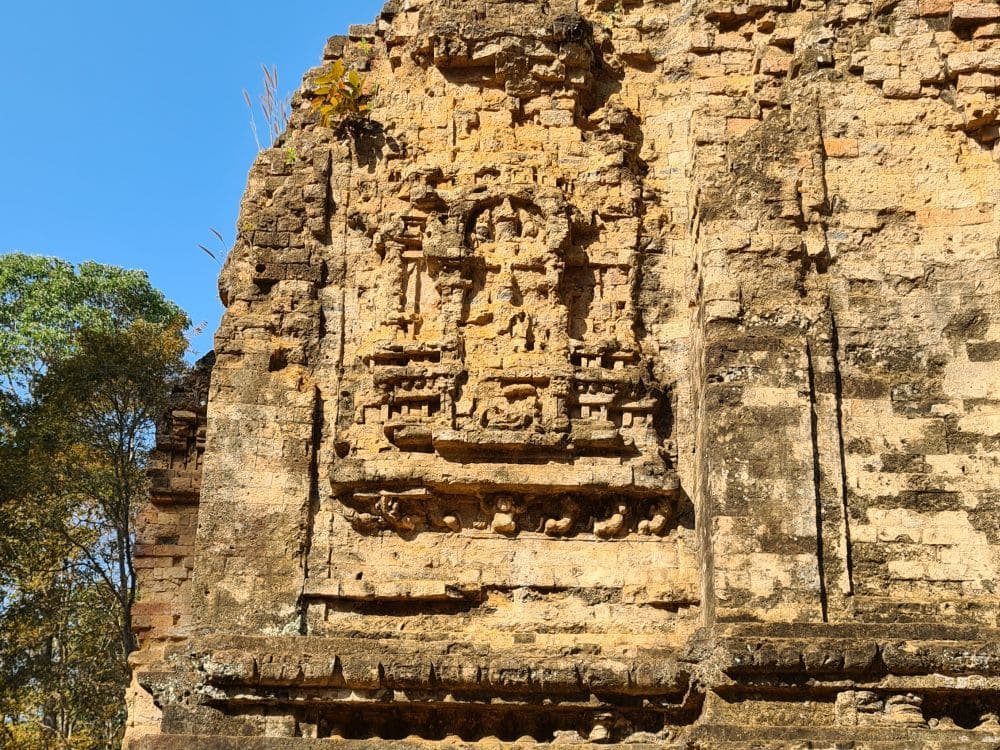
Is Sambor Prei Kuk worth visiting?
Unless you’re a real temple or architecture aficionado, I’d say it’s not worth visiting. Especially compared to the temples of Angkor or Preah Vihear in Cambodia or Ayutthaya or Sukhothai in Thailand, these temples are somewhat underwhelming.
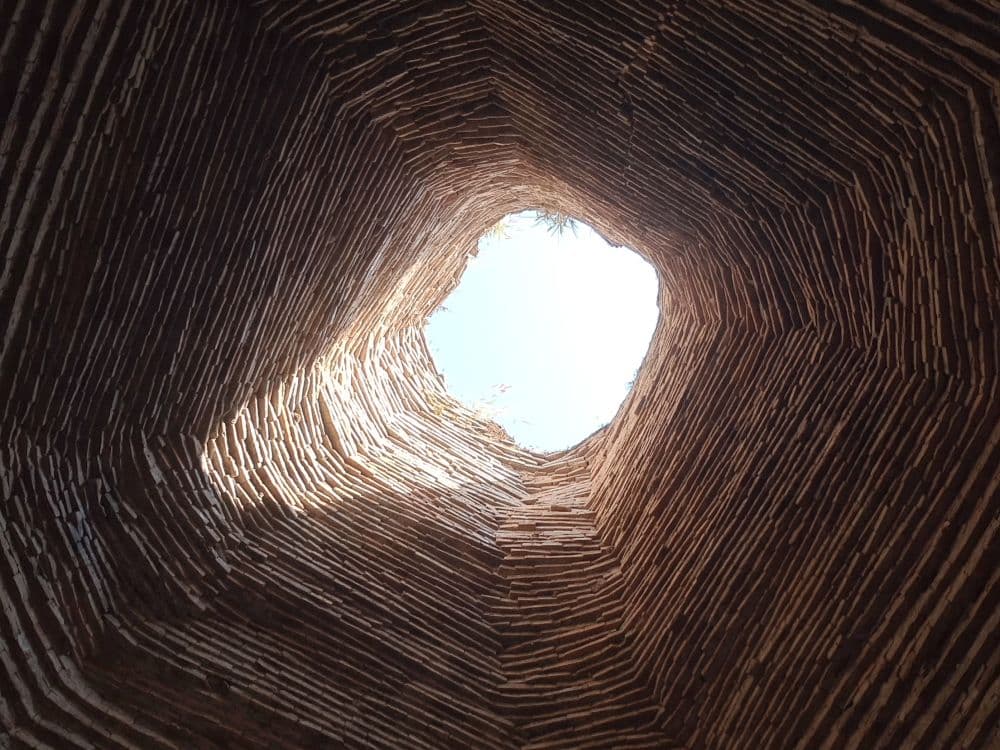
Tips for visiting these temples
You can hire an official guide inside the park, who can tell you the basics of the history of these temples, and can show you the ones that are most worth seeing. Ours did not speak very good English, so be prepared with a translation app on your phone.
There are many tours available to Sambor Prei Kuk, mostly from Siem Reap, but also from Phnom Penh. Click on the images below to see a whole list of possibilities:
Bring some cash – either Cambodian or US dollars – to tip the guide – $5-10 would be appropriate.
Have some water with you, and use sunscreen.
Look at the woods around the temples; you’ll see large bumps here and there. These are likely unexcavated temples, but whether you hire a guide or not, do NOT go wandering off. There may still be unexploded mines in these woods, while the temples your guide shows you have been de-mined.
I think that this site is somewhat wheelchair accessible. The paths are dirt but relatively flat and smooth. We were there in the dry season so it might be more difficult in the rainy season. In any case you won’t be able to go into any of the temples since they all involve some steps up and/or down, but you can see them all from the outside.
The restrooms are pretty basic. Bring your own supply of toilet paper and throw it in the bin after use; use the bucket of water to flush.
We stayed at the very pleasant Sambor Village Hotel, about a half-hour from the site. There are plenty of hotels in Kampong Thom, the nearest town to the site.
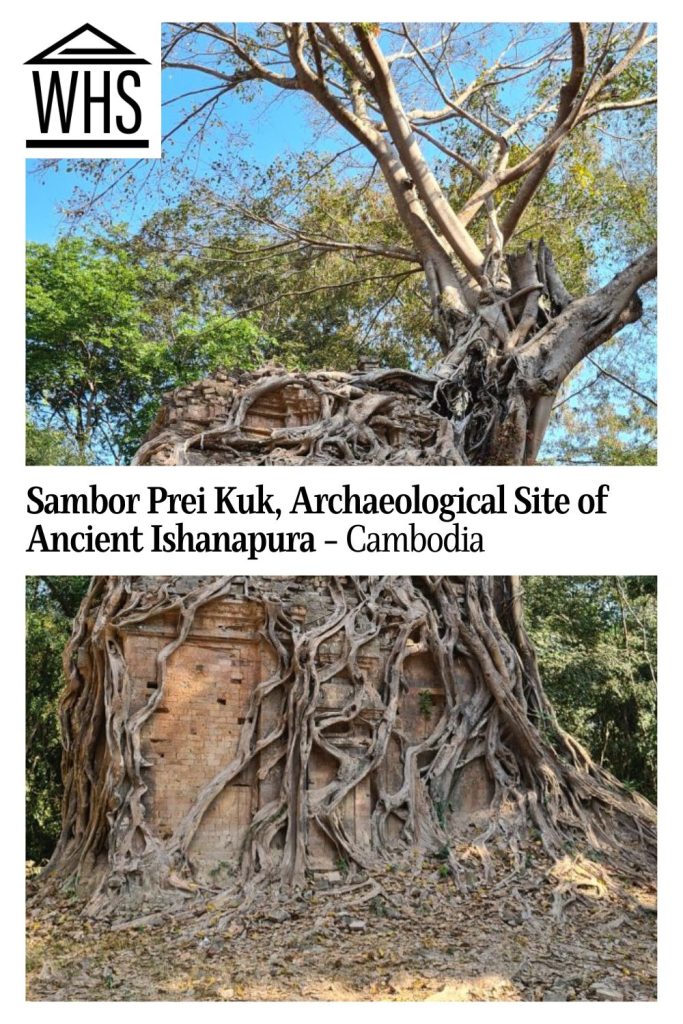
Where is Sambor Prei Kuk?
Sambor Prei Kuk is about three hours from Siem Reap and about four hours from Phnom Penh. You could rent a car to get there from either city. Otherwise you can hire a car and driver or sign up for a day tour from either city.
Sambor Prei Kuk does not appear to have an official website. This website seems to be an effort on the part of local tour agencies and has some information, albeit quite hard to read. Try selecting the text to make it more legible.
Have you been to Sambor Prei Kuk? If so, do you have any additional information or advice about this UNESCO World Heritage site? Please add your comments below!

